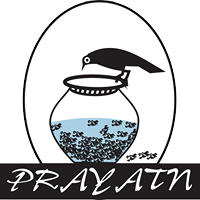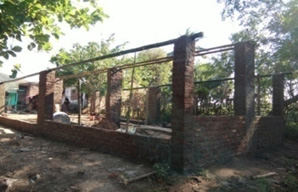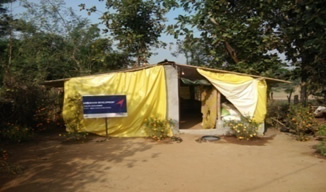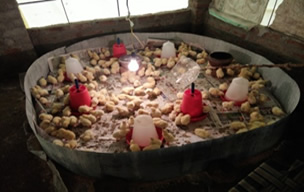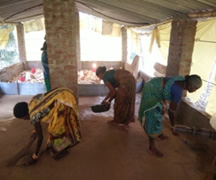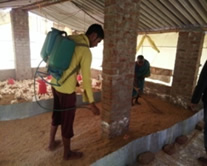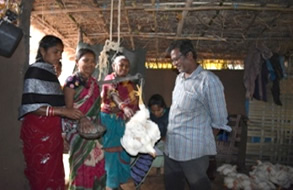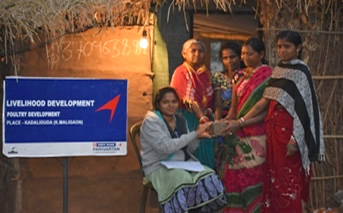Kadaliguda is a small village in Rayagada district of Odisha having 130 households all of which belong to Other Backward Classes. Economic condition of families living in this village is very poor and all of them depend upon agriculture or wage labour for livelihood. Women of the village had formed a Self Help Group with the hope that this will help them in improving their condition but could not run it properly because of lack of any understanding of the same. Somehow, they manage to get loan of Rs 1 lakh from a local bank but were struggling with its repayment because they could not develop any income generation source from the same.
Seeing the poor economic condition of villagers, Prayatn selected the village for implementation of the Holistic Rural Development Programme and started holding discussions with the people to understand their situation as well as its causes. Discussions revealed hopelessness among the people because of the failure of SHG. In this situation, Prayatn staff discussed about different livelihood development opportunities that they can take up in the locality and assured that the organization shall extend financial as well as technical support to them. The SHG members expressed interest in poultry. So, details of cost involved, terms and conditions involved and the returns expected in the establishment and running of poultry house was shared. Upon knowing the details, the SHG members passed a resolution for seeking support from the organization and recorded it in their meeting minutes.
As per the terms and condition, the members were expected to collect and deposit 20% of the cost involved as their contribution. This amounted to Rs 1700 as the total cost estimate was about Rs 6500. An agreement was soon signed and construction of poultry house was initiated after procurement of required material like Asbestos, Asbestos Gamla, binding wire, steel rod, cement, J-Huck, Jali, etc. On January 7, 2019, a training of the beneficiaries was organized on proper process of poultry development.
Chemical sterilization of the space developed was then ensured and chicken of appropriate breed were procured and provided along with feed (pre-starter, starter and finishers) and medicine kit. The beneficiaries were then guided about proper feeding process, vaccination, medication, germ protection, care, etc. through regular monitoring, visits and guidance by the livelihood experts and community organizers. Weight measurement was then on regular basis to review their growth. The women were explained how to maintain daily expenditure and income in a register so that they are able to analyze their profit while selling them. The women worked hard and developed their own system to share responsibility of taking round the clock care of the chicks in shifts.
Chemical sterilization of the space developed was then ensured and chicken of appropriate breed were procured and provided along with feed (pre-starter, starter and finishers) and medicine kit. The beneficiaries were then guided about proper feeding process, vaccination, medication, germ protection, care, etc. through regular monitoring, visits and guidance by the livelihood experts and community organizers. Weight measurement was then on regular basis to review their growth. The women were explained how to maintain daily expenditure and income in a register so that they are able to analyze their profit while selling them. The women worked hard and developed their own system to share responsibility of taking round the clock care of the chicks in shifts.
Between February 17 to 19, the chicken were sold when they gained weight of about 1.5 to 2 kg and market rate of Rs 75 to 100 per kg was obtainable. They were sold to vendors in J K Town and Bissumcuttack area of Rayagada and the process resulted income of Rs 63,480 for 415 chicken. When this was compared with the cost of chicken, their feed and medication which was found to be Rs 60,580, net profit of Rs 2900 in the very first lot. In addition, some feed was left for use in the next cycle.
When the SHG members realized the profit in the first round itself, they felt happy that the initiative will succeed. Their confidence too increased. They learnt how their joint efforts can help them in improving their economic condition through joint enterprise. At the same time, they proved to be models for other community members in their own village and around.
